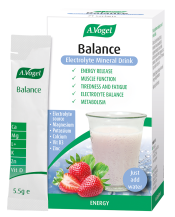Why is preparation so important?

If you are participating in a long-distance cycle, preparation really is everything. You can’t expect to go on a 100 mile trek without building up your endurance or refining your technique.
Nevertheless, despite the obvious work that you should be doing to physically prepare yourself, many cyclists often overlook other aspects of preparation that can make just as much of a difference. How much water should you pack? What kinds of food should you bring with you? What about a first aid kit or spare parts?
Today, I’m going to try and cover the basics so hopefully you have an idea about how to prepare yourself physically as well as what you should be taking with you!
What should I do before?

Build up your endurance
Physically training your body would definitely be a good idea and I’d definitely recommend focusing on endurance. It doesn’t matter if you have strength; if you lack the stamina, you will end up exhausted a lot sooner than you may have anticipated.
There are a number of ways you can increase your endurance, whether you’re a beginner or a more experienced cyclist. Start by looking at the distance you are cycling at – if your normal cycle route is around 13 miles long, try to gradually increase this distance. This may mean that you have to start training months in advance but it’s the best way, trust me.
Next, consider introducing some intervals into your routine. This should help to increase your speed as well as your stamina. I would personally recommend following a pyramid scheme1 that involves a 30 minute warm-up before pedalling hard for 8 minutes, followed by a 4 minute rest period. As you continue, shorten each interval by 2 minutes until you reach 1 minute of hard effort. Then simply repeat the exercise.
Focus on off-bike exercises
Physical preparation isn’t all about staying on your bike. You will have to focus on other forms of exercise that may help to increase your speed, stamina and endurance.
I’d suggest starting with your core muscles to begin with. These include your abdominals and obliques. Strengthening these muscles should help to improve your balance and flexibility, enhancing your overall performance – for more information, please check out our blog ‘What is a core workout.’
Next, you should consider other athletic activities such as running, swimming or even yoga. All of these are great for working the muscles that you will rely on during a long-distance cycle. Running is especially good if you are looking to boost your cardio while yoga can help to stretch your muscles, preventing the usual aches and pains that accompany a hard cycle.
Finally, seriously think about visiting your local gym and speaking to a coach. Your gym will likely contain a plethora of exercise machines and weights that will help to get your muscles into shape - my particular favourite is the cross-trainer!
Check your bike
Arguably the most obvious piece of preparation, you’d be surprised how many cyclists forget to check their bikes and end up regretting it half-way through a cycle. Before you plan on going anywhere, it’s absolutely essential that you have a good hard look at your bike.
Make sure the tyres are roadworthy, check your breaks and consider your gears. Is the seat adjusted for your comfort and are the handlebars positioned properly? These are simple checks to perform but they will definitely save you a lot of angst in the long run.
1http://www.active.com/cycling/articles/2-workouts-to-boost-your-cycling-speed
What should I bring with me?

Liquids
The first thing you should be packing is a bottle of water. In fact, forget that, you should be packing multiple bottles of water!
If you’re cycling over a long distance then you will definitely be building up a sweat and losing essential fluids and electrolytes.
Keeping hydrated is definitely a priority then, otherwise you could risk becoming dehydrated and trust me, nothing will ruin your cycle quite like dehydration.
Don’t be fooled by caffeinated energy drinks either. These may temporarily provide a rush but eventually that sugar rush will turn into a sugar crash and your energy levels will plummet. Not to mention these fizzy concoctions do not actually count as fluids and will not rehydrate or restore any lost nutrients.
Instead, pack plenty of good old-fashioned plain water. If you’re looking for an added boost, include a sachet of our Balance Mineral Drink. Rich in fluid-retaining electrolytes and trace minerals like calcium and muscle-boosting magnesium, this delicious strawberry-flavoured drink can help to replenish any lost electrolytes, keeping you hydrated and fighting the symptoms of fatigue.
Interestingly, research also suggests having some beetroot juice before endurance exercise could also help to improve our stamina and oxygen uptake! A smaller amount, say around 100ml should be sufficient, and from there on in top up on water. Read our blog to find out more.
Sensible snacks
The further you cycle, the more your muscles are going to be crying out for fuel. It might be tempting to immediately reach for a chocolate bar or a biscuit to perk your blood glucose levels but this is not a good idea.
In the same vein that fizzy energy drinks only provide a quick fix, snacking irresponsibly may raise your glucose levels but inevitably this will be followed by a ‘sugar crash.’ Instead you would be better to focus on snacks that are rich in essential nutrients such as protein and fibre, as well as providing a slow steady burn.
Bananas are my personal favourite – they’re chockfull of dietary fibre and potassium! However, if you want a bit more variety, I’d definitely recommend checking out my blog on 7 great snacks for cycling to get some more creative ideas!
Emergency kit
Hope for the best, prepare for the worst – not exactly cheerful advice but it’s definitely worth keeping top of mind when you’re preparing for a long-distance cycle. Of course, ideally everything should go perfectly and it’ll be smooth sailing all the way from A to B. However, as any veteran cyclist will tell you, anything can happen.
That’s why I’d recommend packing a few core essentials that should be able to get you outof any tight spots you encounter. The first and foremost, I probably don’t even have to list but just in case, remember to pack your mobile phone!
- Tyre pump: You’re 70 miles from home and currently cycling in the middle of nowhere, surrounded by endless fields of cows and sheep. Your tyre decides to go flat – guess you’ll be footing it to the nearest farm to ask for help. Not an appealing scenario but one that’s surprisingly common. That’s why a tyre pump should definitely be at the top of your list – they’re easy and affordable to pick up from retail outlets such as Halfords, or you could just order one from Amazon!
- Inner tube: Running off the previous scenario I’ve mentioned, it might also be worthwhile investing in a spare inner tube. Just make sure it’s in good condition before you leave the house – the last thing you need is to discover your spare inner tube is just as useless as the one you’re trying to replace!
- Tyre levers: If you’re trying to change a tyre, it’ll be very difficult to do so without a good pair of tyre levers.
- Maps: We live in a world dominated by Googlemaps and GPS – surely paper maps are a little bit outdated? Well as you’re probably aware, GPS is not always accurate and technology is not always reliable. Supposing your device decides to have a moment to itself while you’re navigating the Scottish countryside? This is where an old-fashioned paper map can come in handy, so I’d definitely recommend bringing one along for the ride.
- Waterproofs: If you live somewhere like the UK, then you’ll know better than to rely on the weather forecast. You may leave your house and be cycling along in bright sunshine for the first 50 miles but that can change extremely quickly. I doubt you’d want to spend the next 70 miles of your ride drenched to the skin so no matter what the forecast promises, pack some waterproofs!
- Multi-tools: If you need to adjust your seat or your handlebars, then you’re going to need a good set of multi-tools to help you do the job properly!
- First aid kit: Accidents can happen, so I would definitely make packing a first-aid kit a priority! Include some bandages, antiseptic cream and plasters. You should be able to pick one up easily online, with some even catering specifically towards cyclists. However, if you encounter anything nastier than a cut or a graze, make sure you dial 999!
What should I do after?

Rest and recover
It’s over! You’ve made it to your destination in one piece, so what now? Surely that’s it as far as preparation goes? Well not really, since you still need think about your recovery. If you’ve been cycling over a long distance then your body is probably exhausted and your muscles will definitely be in need of a little TLC.
Remember to take things easy. Hitting the gym for a 2 hour workout session the next day is not going to do you any favours so instead focus on gentle exercises such as yoga or swimming. Treat yourself to a nice warm bath to help your muscles relax – I’d personally recommend some Epsom salts to give your soak an extra boost!
Recharge with good foods
Just as having the right snacks during your cycle was important, what you choose to eat after can have a major impact on how your muscles recover. I’d recommend trying to get a good intake of complex carbohydrates, such as brown rice, potatoes, lentils or wholegrain bread, in addition to plenty of protein and nutrient-rich fruit & veg.
A couple of meal suggestions I would definitely opt for include:
Three Bean Curry
Spinach Risotto with Zander
Pumpkin Tagliatelle
Try Atrogel
Finally, if you r muscles are protesting and aching, I would try using our Atrogel Arnica Gel. It’s specifically formulated for muscle pain, containing extracts of fresh arnica flowers. Cooling and soothing for tired muscles, it’s great for relieving pain and can be used alongside other medicines. Best of all, you can use this remedy for as long as you need to – simply apply to the affected area and wait for your pain to fade away.
r muscles are protesting and aching, I would try using our Atrogel Arnica Gel. It’s specifically formulated for muscle pain, containing extracts of fresh arnica flowers. Cooling and soothing for tired muscles, it’s great for relieving pain and can be used alongside other medicines. Best of all, you can use this remedy for as long as you need to – simply apply to the affected area and wait for your pain to fade away.









